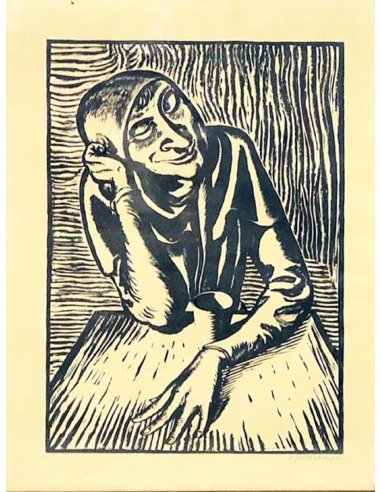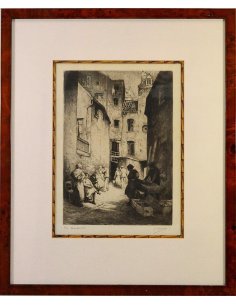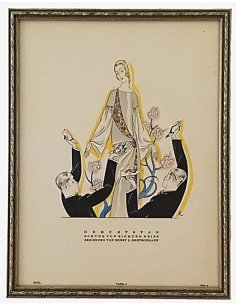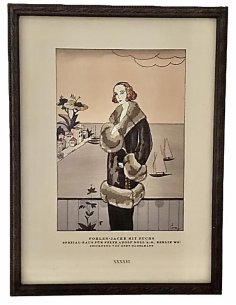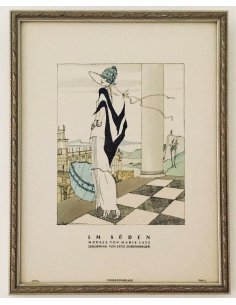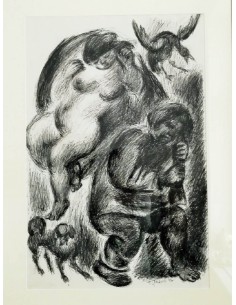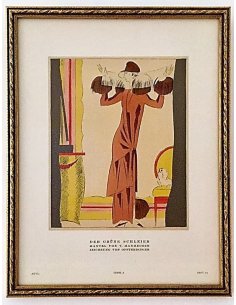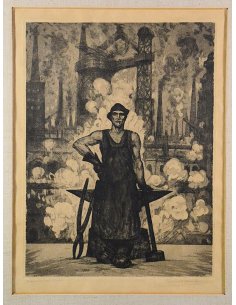Wood cut "Tyll" by Andreas Paul Weber, ca. 1920
Andreas Paul Weber's work "Tyll" is an expressive depiction of the medieval fool Tyll, a figure from German folk literature, known from the "Chronicle of Tyll" and also as a literary symbol. The original-woodcut captures Tyll's mischievous yet melancholic personality. With his smile, the figure appears both playful and profound.
The woodcut utilizes the typical characteristics of Andreas Paul Weber's style: dynamic, strong, high-contrast black-and-white depictions and a rather reduced yet striking imagery. Weber masterfully focuses on the figure of the fool, who in folklore often oscillates between the worlds of humor and tragedy.
About the artist:
Andreas Paul Weber (1893 - 1980)
Andreas Paul Weber was a German artist known for his dark and illustrative lithographic prints, which provide socially critical and satirical commentary on German culture, politics, and society of the early 20th century.
Andreas Paul Weber began his artistic career as a painter but soon turned to graphic art and woodcuts, where he developed his own expressive style. Weber often used historical and literary figures in his works as symbols for larger social and psychological issues.
The work "Tyll" was created in the 1920s, a time when Weber was cementing his reputation as a woodcut artist. The depiction of Tyll as a fool is part of the symbolic and often critical reflections of this period, which was marked by political and social upheaval.
While he was still alive, the city of Ratzeburg honored the artist with the opening of the A. Paul Weber Museum.
https://www.weber-museum.de/leben/

